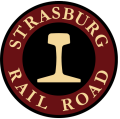REUNION OF STEAM

For the first time in more than 60 years, two locomotives representing the last of their kind will be in the same place – Strasburg Rail Road – for excursion rides, photo sessions, whistleblowing, behind-the-scenes tours, and special in-cab experiences.
Our once-in-a-lifetime Reunion of Steam event reunites two iconic Norfolk & Western Railway locomotives for five themed weekends, giving steam fans and train enthusiasts the unique opportunity to experience steam locomotion history like never before. Experience the magnitude of steam train design and engineering changes spanning fifty years by joining us in celebrating the Norfolk & Western Class J 611 and Norfolk & Western Class M #475 locomotives, the last of their Classes.
Norfolk & Western Class J 611
The first opportunity to experience steam history is with the Norfolk & Western Class J 611, an engine of sleek, beautiful design and lovingly referred to as the ”Queen of Steam.” The 611 is the sole surviving Class J locomotive built by Norfolk & Western Railway, originally rolling into service in May of 1950. This powerful engine was designed to pull 15-car passenger trains from Norfolk, Virginia to Cincinnati, Ohio. The J-class series were known for hauling heavy trains at high speeds with reliability, but just knowing the 611 can pull cars at a top speed of 110 mph across flat terrain isn’t enough. At this event, you’ll be able to experience the 611’s magnitude personally through hostling tours, cab tours, whistle-blowing, and shuttle rides.
The N&W Class J 611 is designated a National Historic Engineering Landmark and known by some as the zenith of steam passenger locomotive design and technology. While the 611’s service to the N&W Railway finished with hauling the last Farewell to Steam excursion in 1959, it was fully restored to operational condition in 2015.
In addition to offering excursion rides, serving as a home for Thomas the Tank Engine™ and his pal Percy, and providing freight rail services, Strasburg Rail Road specializes in locomotive construction and restoration through our machine shop services. We are honored to host the 611 for her annual inspection and invite you to join us on a one-hour guided behind-the-scenes tour of this classic passenger locomotive while it is in the shop.
Norfolk & Western Class M #475
Strasburg Rail Road is home to the only other operational Norfolk and Western steam engine, the Class M #475. This locomotive was built in 1906 by Baldwin Locomotive Works to haul freight and coal trains for Norfolk & Western Railway. (Shortly after this time, the railroad began to design and build its own locomotives with new technology and engineering). The engine was later reassigned to branch line duties. #475 completed 50 years of service, retiring in 1956.
Strasburg Rail Road restored #475 to its fully functional condition in 1993, adding it to the other restored engines operating on America’s oldest continuously operating railroad. The locomotive’s size and strength make her flexible for a variety of uses, including hauling passenger cars and freight.
While renowned for its historical value, #475 was also famously used in the 2000 movie Thomas and the Magic Railroad. The locomotive and three of Strasburg’s coaches were lettered for the fictional Indian Valley Railroad. #475 still has a connection with Thomas the Tank Engine today, often hauling passenger cars alongside the little blue engine during or in between Day Out With Thomas™ events.
A Reunion of Steam
Though Class J 611 and Class M #475 operation overlapped for a few years in the 1950s, the differences in design and engineering is staggering. With the two steam locomotives reunited for the first time since their post-Norfolk & Western service, you can see, hear, and feel how the Norfolk & Western Railway revolutionized steam locomotion technology in a short period of time. Come to this once-in-a-lifetime event held on weekends between September 27 and October 27 to see two historical icons, the last of their kind, in operation again.
